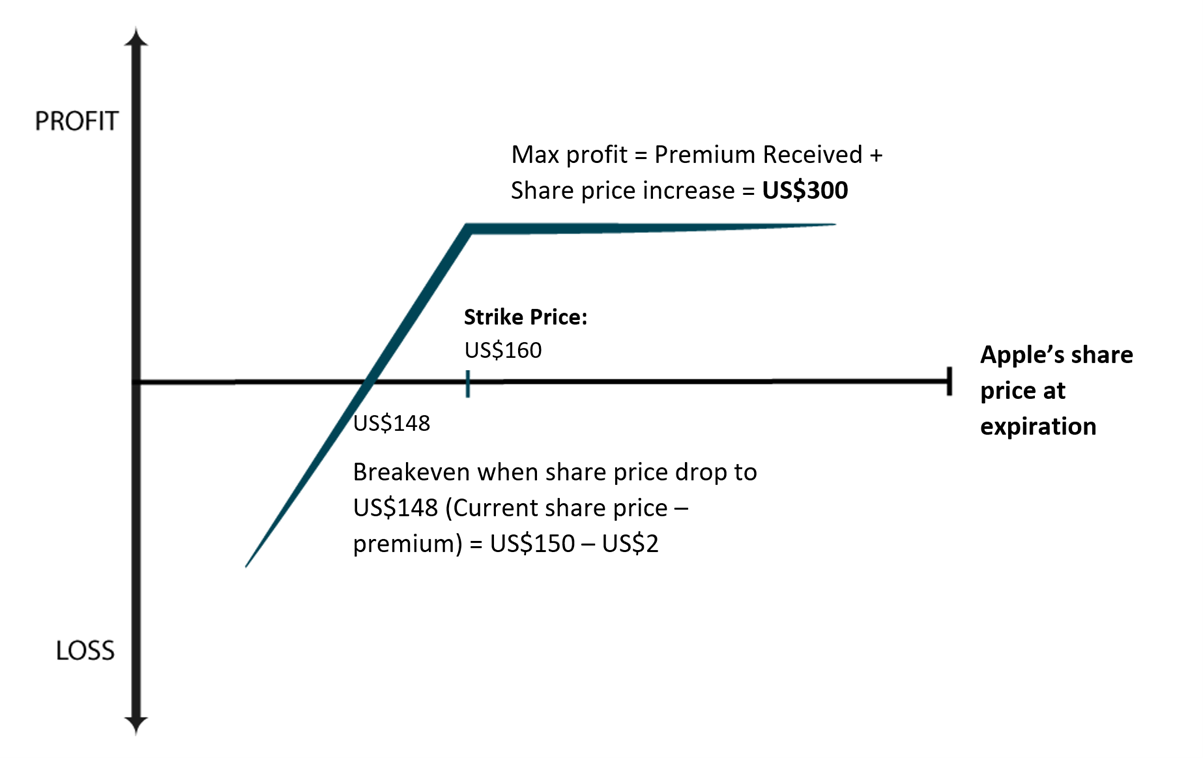Bear markets bring lower prices and increased volatility in the stock market.
As prices fall in a bear market, investors become worried that prices would continue to fall.
However, long-term investors with a higher risk appetite can consider using the covered call options strategy to generate income during this downtrend cycle.
What is a covered call strategy?
A call option gives the buyer the right to buy a stock at a predetermined price, known as the strike price, for a predetermined amount of time.
Call sellers have an obligation to sell the underlying shares to the buyer if the buyer exercises that right.
A covered call strategy is used when an investor holds a long position in a stock and sells a call option on the same assets.
When and how to use a covered call strategy?
A covered call strategy is a popular options strategy that is deployed when investors do not expect share prices to rise much in the near term.
When an investor sells the call options, he or she will receive a premium from the buyer of the call options.
If the share price doesn’t rise above the strike price by the expiration date, the investor will keep the premium and the call option will expire.
However, if the share price rises above the strike price, the buyer of the option will exercise his or her right and the investor will have an obligation to sell the shares owned to the buyer of the options at a pre-determined price or the strike price.
This means that the investors will not be able to enjoy the profit of the surge in the share prices of the stock.
Meanwhile, if share prices were to plummet in the near-term, the option will expire and the investor will keep the premium. The losses from the share price will be offset by the premium earned from selling the call option.
Example of a covered call strategy using Apple Inc.
Apple’s current share price = US$150 (round up) per share.
Position owned = 100 units of Apple shares
Sell Call Options (1 option contract represents 100 shares of the underlying stock)
Strike price = US$160 per share
Expiry date = 15 June 2022
Premium = US$2 (Since each call is 100 shares, total income for 1 option = US$200)

Pros and Cons of Covered Calls Strategy
| Pro |
Con |
| Generate additional income from shares you own |
Limit potential gains from near-term price increase in shares owned |
| Low risk as compared to other options trading strategy |
Must continue to own shares until options expired |
| Hedge losses from existing shares owned |
|
If you’re ready to start options trading, covered calls might be a good way to start.
Sometimes, selling a covered call could be even more profitable than owning the shares. This is especially when the stock market is volatile and trending downwards.
I believe that long-term investors who own shares of companies with strong fundamentals will find that selling covered calls cancome in handy during the bear market.
Disclaimer: ProsperUs Investment Coach Billy Toh doesn’t own shares of any companies mentioned.










